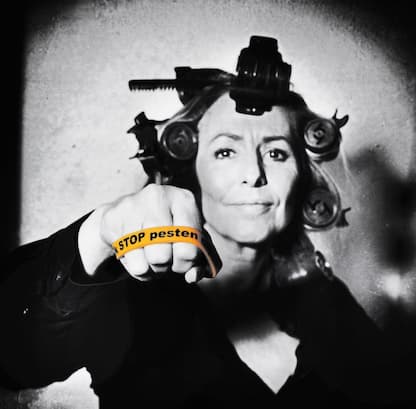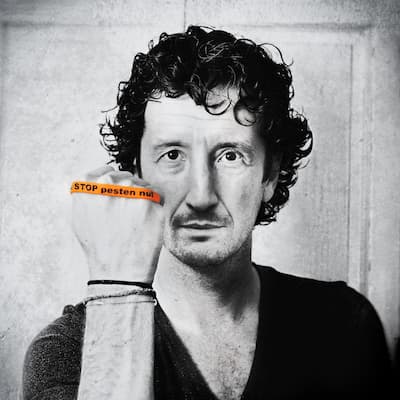Bullies are unaware of their negative self-perceptions.
Advertising campaigns are promoting the idea that bullies truly feel bad about themselves
In one of the ads, for example, a girl denigrates others at school then disparages herself while viewing her own image in a locker mirror. Generally speaking, that’s not how bullies operate. If you assume bullies are aware of feeling bad about themselves, you may be ineffective in dealing with them. Attacking others actually enables bullies to be unaware of what they really feel. Thus, you probably won’t find a bully belittling her reflection in a mirror.
Bullies induce shame and humiliation in others by intuitively recognizing a person's insecurities and attacking them
The bully’s attacks are projections of their own shame and feelings of inadequacy that are modified to penetrate a victim’s vulnerability. Attacking others not only halts any inclination to look within themselves, it also can be exciting as it stimulates the physical experience of power.1 Although bullies diminish others in order to raise themselves up, they are not conscious of how negatively they feel about themselves. Diminishing others keeps their need to elevate themselves out of their conscious awareness.
Feeling sorry for bullies can make you ill-equipped to handle them and yourself with them
A sympathetic response assumes the bully is aware of having a negative self-perception. Forgive the analogy, but imagine that a bully is like a frightened animal whose adaptation to experiencing fear early in life (like the bully’s early responses to shame) automatically leads it to aggressively attack. Compassion is safe to feel if you are socializing the animal in a controlled environment. If instead you just happen to encounter it when you are alone and unsuspecting, you may be threatened or bitten.
As humans adapt to situations and circumstances in early life they develop a pattern of how they respond to shame
Distinctive shame responses color the relationships we have with others and ourselves. These learned responses to feeling shame include withdrawal, avoidance, attacking oneself, and attacking others.2 In response to shame, withdrawal hides one’s feelings from others and it can lead to isolated depression. This response is common in loneliness. An avoidance response implies a self-centered protectiveness that may involve the abuse of alcohol, substances, or addictive behavior. Another response to shame, attacking oneself in a psychologically or physically self-injurious way, is an acquiescent response. Self-blame can maintain a relationship, but it will be at the expense of keeping oneself a victim. Those who bully use the most primitive and destructive shame response: they attack others. The attack other response to shame occurs when an individual feels psychologically endangered and incompetent, and the family system in which the person has grown up has permitted the use of attack as a response.3
The notion that people bully others because they have low self-esteem implies they are aware of feeling bad about themselves as depicted in the ad campaign
If you accept the idea that bullies have low self-esteem, then it is essential to recognize they don’t feel its impact, as you would normally expect. In a previous post, I mentioned research demonstrating that bullies actually do not experience low self-esteem.4 Instead their hubristic pride completely shields them from self-denigration. Hubris is related to egotism and, in some cases, to full-blown maladaptive narcissism.
Bullies don’t attack confident people
They attack what appears to them as weakness. Children and adults are vulnerable if they sympathize with bullies and believe they actually suffer from feeling the effects of low self-esteem. Further, victims of bullying tend to be sensitive people who are likely to attack themselves in response to being attacked. Children who unite in outrage against bullying will have a container for their feelings, since often victims of bullies are isolated or silent as a result of being shamed. In turn, by uniting, they contain the bully who faces the threat of isolation.
Perhaps the ad campaign against bullying should instead feature a bully who denigrates others, and then, upon seeing her own image in the locker mirror, sneers proudly at herself. Such a scenario would be closer to reality.
For information about my publications, please visit my website at marylamia.com.
References
1 Nathanson, D. (1992). Shame and Pride: Affect, Sex, and the Birth of the Self. New York: Norton.
2 Nathanson, D. (1992), cited above.
3 Nathanson, D. (1992), cited above.
4 Thomaes, S., Bushman, B. J., Stegge, H., & Olthof, T. (2008). Trumping shame by blasts of noise: Narcissism, self-esteem, shame, and aggression in young adolescents. Child Development, 79, 1792-1801.
Tip van de redactie
Heb je haast? Navigeer dan snel naar:
► Scholen & Professionals Kenniscentrum Pesten in het Onderwijs
- Of navigeer direct naar de informatie per functionaris: Schooldirectie & MT / Anti-pest coördinator / Leerkracht / Mentor / Ouderraad & MR
- Leerlingen & opvoeders: Kinderen & Jongeren (Leerlingen) / Ouders & Opvoeders
► Sportverenigingen Kenniscentrum Pesten in de Sport
- Of navigeer direct naar de informatie per functionaris: Bestuurders / Coaches, Trainers & Begeleiders / (Top)Sporters & Scheidsrechters
- Jonge leden & ouders Kinderen & Jongeren (Leerlingen) / Ouders & Opvoeders
► Werkgevers Kenniscentrum Pesten op het Werk
- Of navigeer direct naar de informatie per functionaris: Directie en bestuurders / HRM / MT en Leidinggevenden / Medewerkers / Ondernemersraden / Vertrouwenspersonen
► Ouderen Kenniscentrum Pesten in Woonzorgcentra

Breng snel een bezoekje aan ...
► Kenniscentrum (Klassiek) Pesten
► Kenniscentrum Online pesten (cyberpesten)
► Kennisbank & Downloadcentrum o.a. Beleid & Factsheets / Handleidingen / Lesmaterialen / Posters / Wetenschappelijke Onderzoeken
► Ik word gepest, wat kan ik doen
Stichting Stop Pesten Nu is het enige Erkende Goede Doel tegen Pesten in Nederland!







